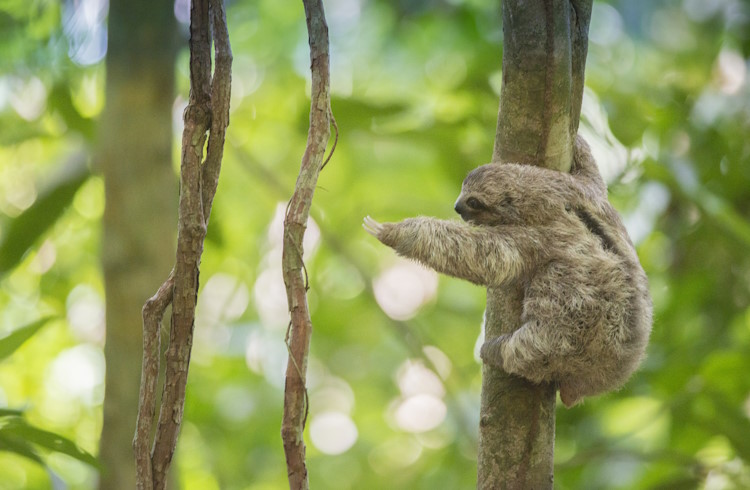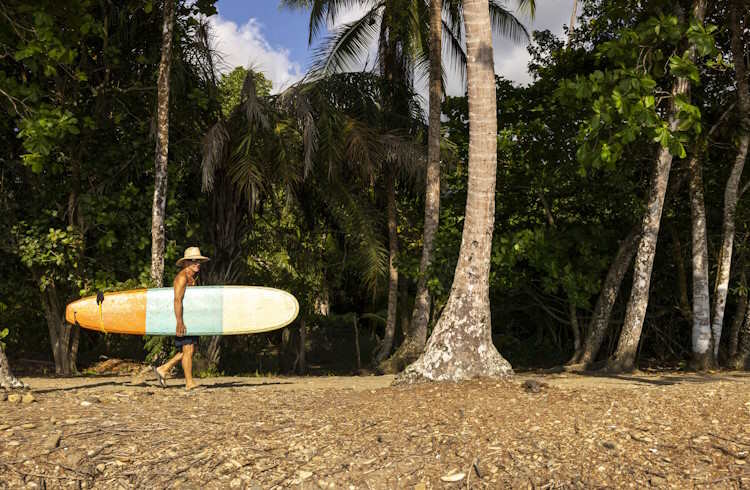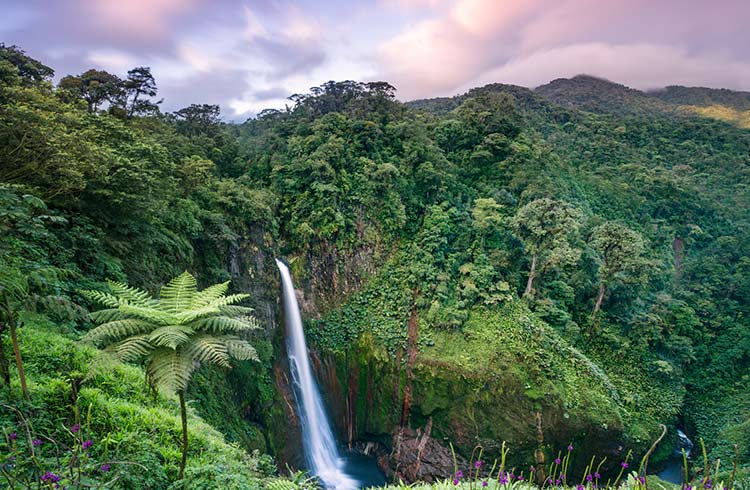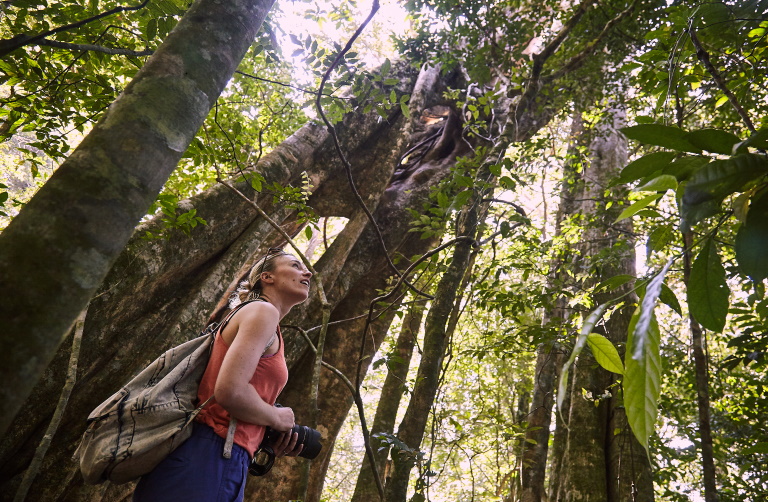Costa Rica Travel Tips: What to Know Before You Go
Visiting Costa Rica soon? Here's what to do and what you should avoid so you can get the most from your trip, travel responsibly, and avoid wearing out your welcome in the land of pura vida.
 Photo © Getty Images / Kevin Schafer
Photo © Getty Images / Kevin Schafer
Of all the places I’ve traveled, Costa Rica is one that captured my heart from the start –so much so that I’ve returned more than 20 times and helped dozens of other travelers plan their trips here. The abundance of wildlife, diversity of landscapes, opportunities for outdoor and eco-friendly activities, warm hospitality, fresh foods, and rich culture make it an easy place to love.
Here are my tips for what to do, what to pack, and things to avoid so you can have a memorable (and safe!) time when visiting Costa Rica.
What to do in Costa Rica:
-
Do pack appropriate gear. Costa Rica has more than 10 climate zones and many more microclimates, so although there are only two seasons – dry and wet (or “green season” as it’s lovingly called) – the weather can vary dramatically depending on your location.
Be sure to research the specific regions you’ll be traveling to and pack accordingly. Even if there’s sunshine in the forecast, always bring a rain jacket. Many activities here happen rain or shine, so you don’t want to be soaked to the bone or miss out completely.
Other must-haves include:
- a backup pair of shoes (especially if your feet are US women's size 9+ or US men’s size 11+ as larger sizes may be difficult to find)
- a dry bag
- eco-friendly sunscreen
- insect repellent
Binoculars are also highly recommended; there’s plenty of wildlife to see with the naked eye, but binoculars can help you get a closer look at, say, those cute sloths snoozing high up in the trees. And although camera phones are great, if you want high-quality wildlife shots, bring a camera with a decent zoom and high resolution.
-
Do support local entrepreneurs. Research your activity options and ensure that your tourism dollars are supporting local people. This is mutually beneficial; you’ll have the opportunity to learn from artisans, chefs, guides, and more, and they’ll have the chance to share their knowledge, perpetuate their culture, and reap the financial rewards.
Some of my most memorable experiences in Costa Rica involved spending time with local experts including the chef who welcomed us into her kitchen to make tortillas together, the naturalist guides who taught us about local flora and fauna, the family who showed us salsa steps in their home, the cultural practitioner who offered stories about her Indigenous culture, and the researchers who shared knowledge about marine conservation while we watched dolphins foraging in Golfo Dulce.

A baby sloth reaches for a vine in a Costa Rica jungle. Image credit: Mark Downey -
Do bring a reusable water bottle. Costa Rica has been working to eliminate single-use plastics and you can help – and stay hydrated – by bringing your own reusable bottle. Drinking water refill stations are becoming common in hotels. Tap water quality varies throughout the country and is drinkable in some places while not safe for consumption in others, so it’s wise to check with your guide or hotel about the water where you’re staying. Or you can opt to bring a bottle that includes a filtering and purifying system.
-
Do learn and use some Spanish. You can study a few basics before your trip and then pick up some common local phrases from your guides. If you have visited or lived in other Spanish-speaking countries (or are a native Spanish speaker), you’ll likely notice some differences. For example, in many other Spanish-speaking places, when you thank someone, a common response is “de nada” (literally meaning “of nothing”). But in Costa Rica, if you thank someone, they may reply “con mucho gusto” (“with great pleasure”). This is one of my favorite phrases in Costa Rica because it feels like a reflection of the warmth and hospitality that I’ve experienced here. Whether you’re a total beginner or an advanced speaker, the effort to use some Spanish is appreciated, and it can help break the ice and build connections with the people you meet on your journey.
-
Do try something new. Costa Rican hospitality and the beautiful natural environment make this an ideal setting for overcoming a fear or tackling a goal. When you take on a new challenge, whether it’s an outdoor activity such as surfing, ziplining, or jungle trekking, or a cultural experience such as a mask-making workshop, you have the chance to make memories with your travel mates and build confidence. And you’ll always remember your firsts in this special place. My first time ziplining, rappelling a 200-foot (61m) waterfall, making homemade corn tortillas, hiking in the jungle at night, and observing an active volcano all happened in Costa Rica.

Costa Rica is an ideal place to try surfing. Image credit: Jordan Seimens -
Confirm activity restrictions and certifications in advance. There is an abundance of adventure activities in Costa Rica, but not all are safe or appropriate for every traveler. Always book with a reputable operator, research their training, certification, and safety procedures, and inquire about any height, age, health, fitness level, or other possible restrictions.
-
Do consider shuttles and guided transportation. Some travelers opt to rent a car for optimum flexibility, but if you’re not comfortable driving with changing weather conditions (such as being stuck on a narrow, winding, cliff-lined highway during a downpour while buses and large trucks rule the road), traffic, and inconsistent signage, it may be best to save yourself the stress and book shared shuttles or a private driver. If you hire a driver-guide, you’ll also have the added benefit of their cultural and environmental insight and suggestions for restaurants and activities.
-
Do adopt a pura vida approach. You’ll hear the phrase pura vida (meaning “pure life”) used to say many things, including “hello,” “goodbye,” and “no worries.” It’s more than a greeting; it’s a mentality. When in Costa Rica, it’s a good idea to adopt this relaxed, kind, and playful attitude. Things may not go as you imagined. Be flexible and embrace the experience.
-
Do put down your phone. There is so much to see and do in Costa Rica, if you’re staring at your phone, you’ll miss a lot – an emerald-colored toucanet tucked into the foliage, a crocodile cruising by in the river, a snake slithering across the trail, the chance to connect with people around you.
What not to do in Costa Rica:
-
Don’t plan a trip to Costa Rica during the Christmas, New Year’s, and Easter holidays...because these are also popular vacation times for local people. If you travel during these holidays, you’ll likely find larger crowds, fully booked hotels, sold-out activities, and higher rates (and in some places, businesses may be closed while families are off traveling).
-
Don’t mistake short distances for short trips. Costa Rica looks small on the map, and you might assume short distances mean quick trips. But weather and road conditions often lead to delays. Research actual drive times, pack snacks and water for the journey, and always plan extra time for road travel.
-
Don’t hike off marked paths or after dark. For your own protection (remember those snakes we mentioned?) and to avoid trampling the fragile ecosystems, always stay on marked trails. Guided night hikes in search of nocturnal wildlife are exciting and I absolutely recommend them, but never go into the jungle on your own at night.
-
Don’t disturb wildlife, plants, or other things found in nature. Costa Rica’s flora and fauna are intriguing, and you may be tempted to pluck a colorful flower, hug a sloth, or snag a seashell. But touching animals causes them stress (and some may harm you in retaliation or self-defense), and disturbing wildlife or the environment is also illegal here. If you truly love the animals and natural beauty of Costa Rica, the best thing you can do is admire them from a safe distance; look but don’t touch.
-
Don’t write off San José. Travelers often suggest skipping San José. But I think that’s a mistake. The capital is home to historical sites, lively markets, and endless cultural and culinary experiences. It’s also a great base for day trips such as coffee tours, birdwatching walks, artisan village visits, and volcano hikes.
-
Don’t project your own expectations. Leave your expectations – whether they’re your own cultural norms or those staged and filtered images you’ve seen on social media – at home. Come to Costa Rica with an open mind, ready to experience all it has to offer.
Related articles
Simple and flexible travel insurance
You can buy at home or while traveling, and claim online from anywhere in the world. With 150+ adventure activities covered and 24/7 emergency assistance.
Get a quote

No Comments